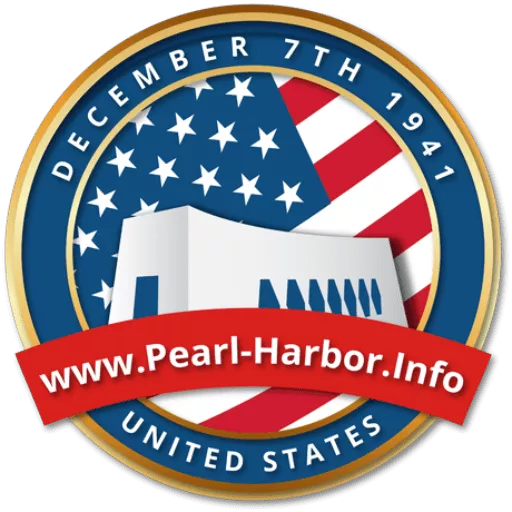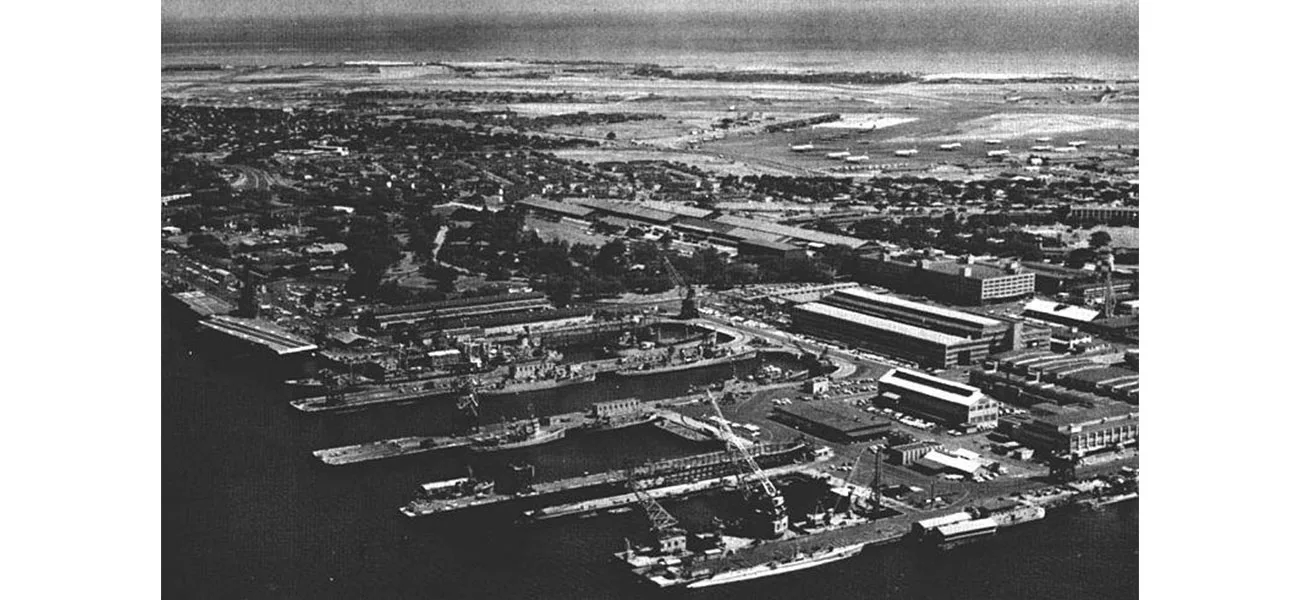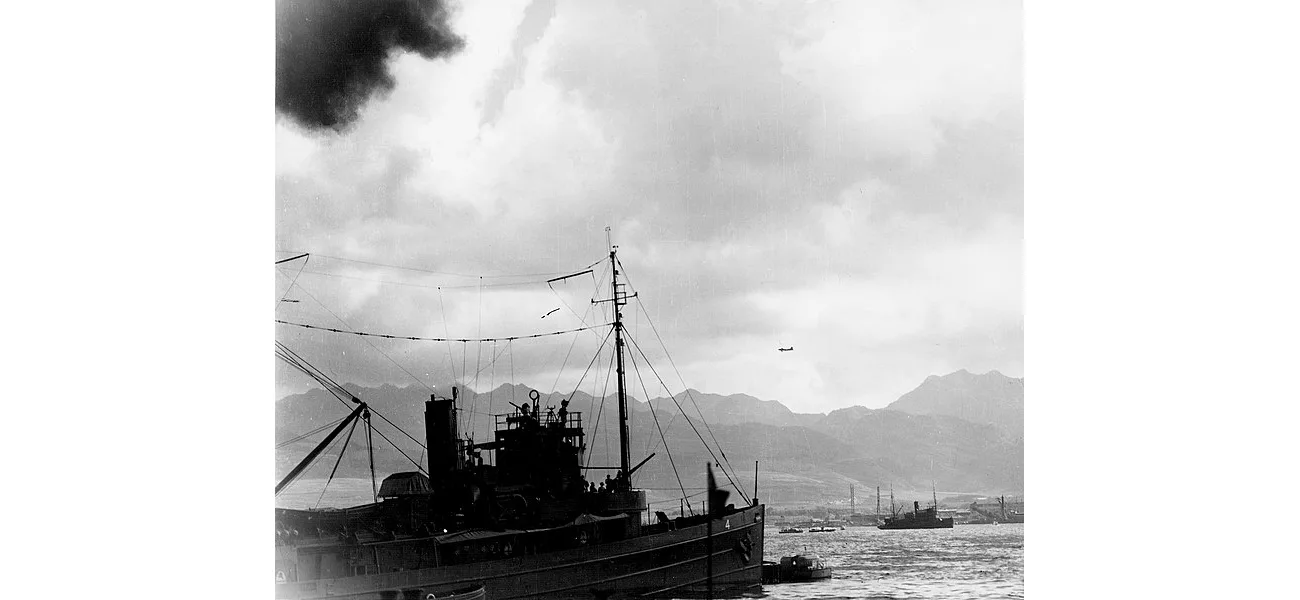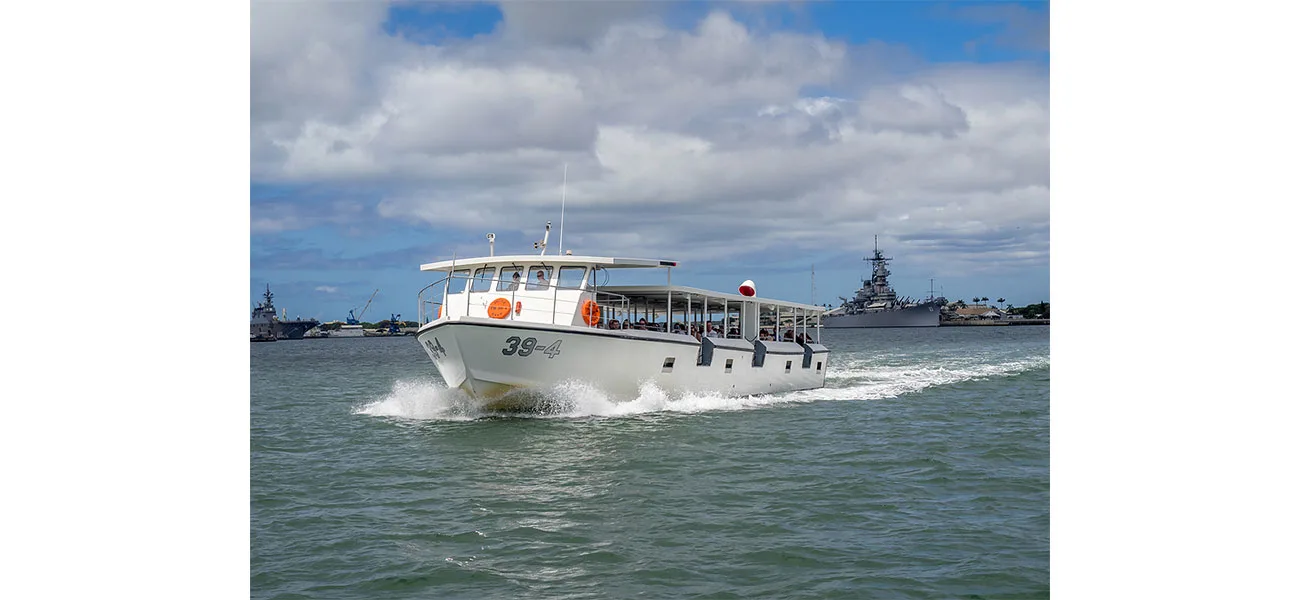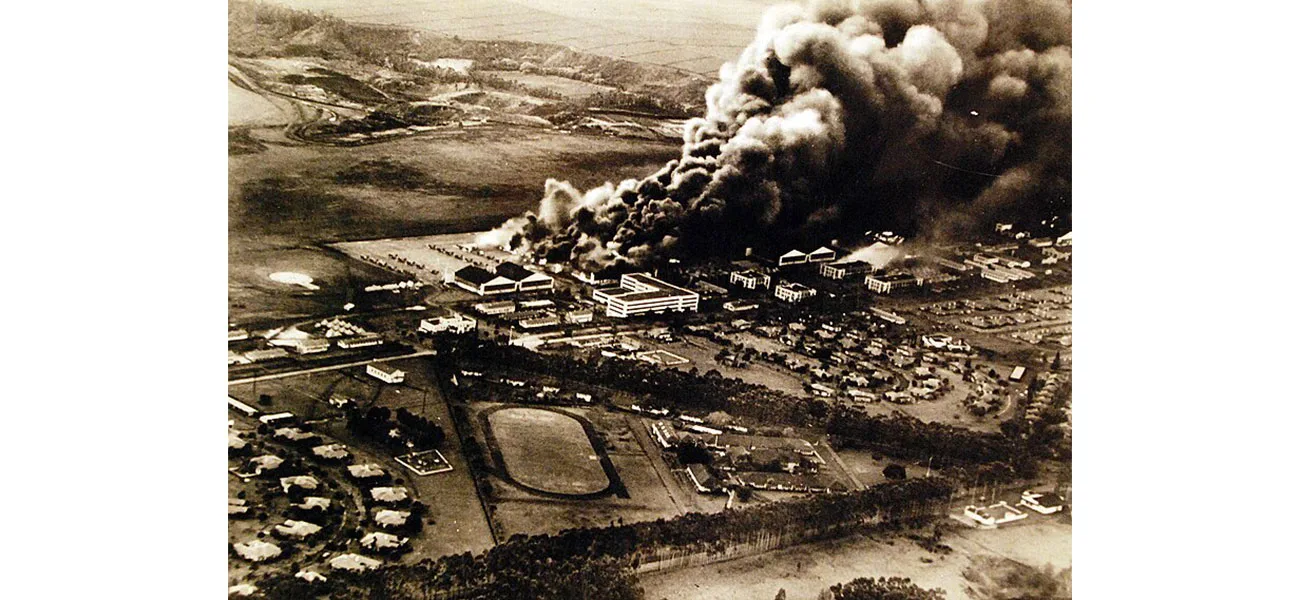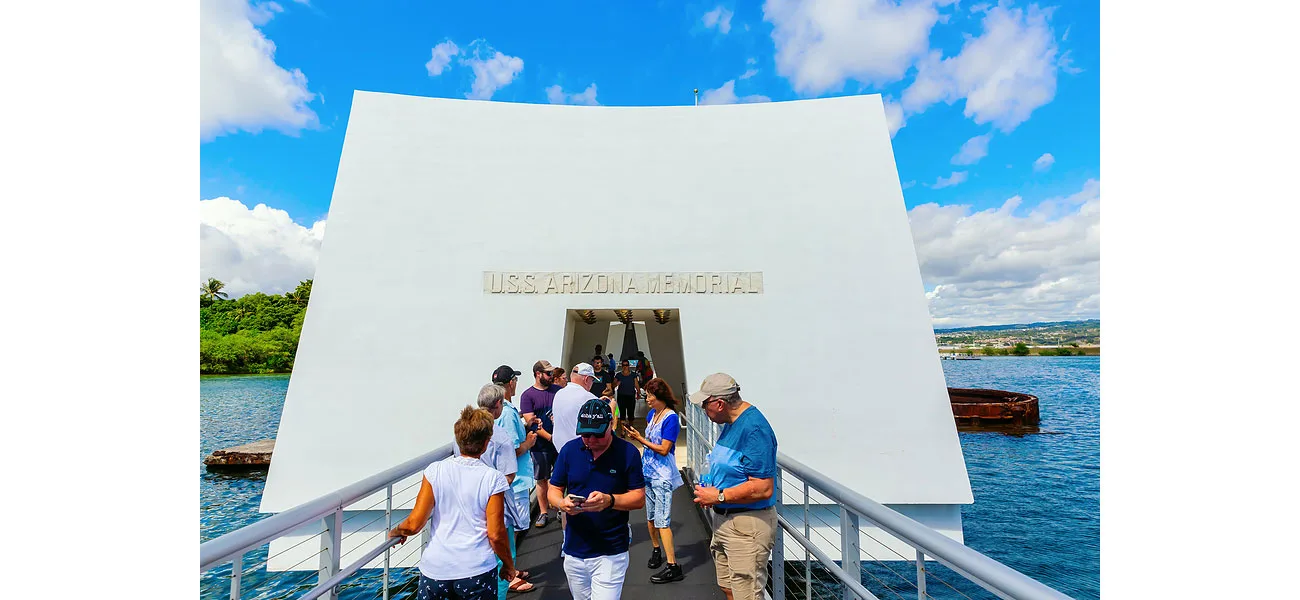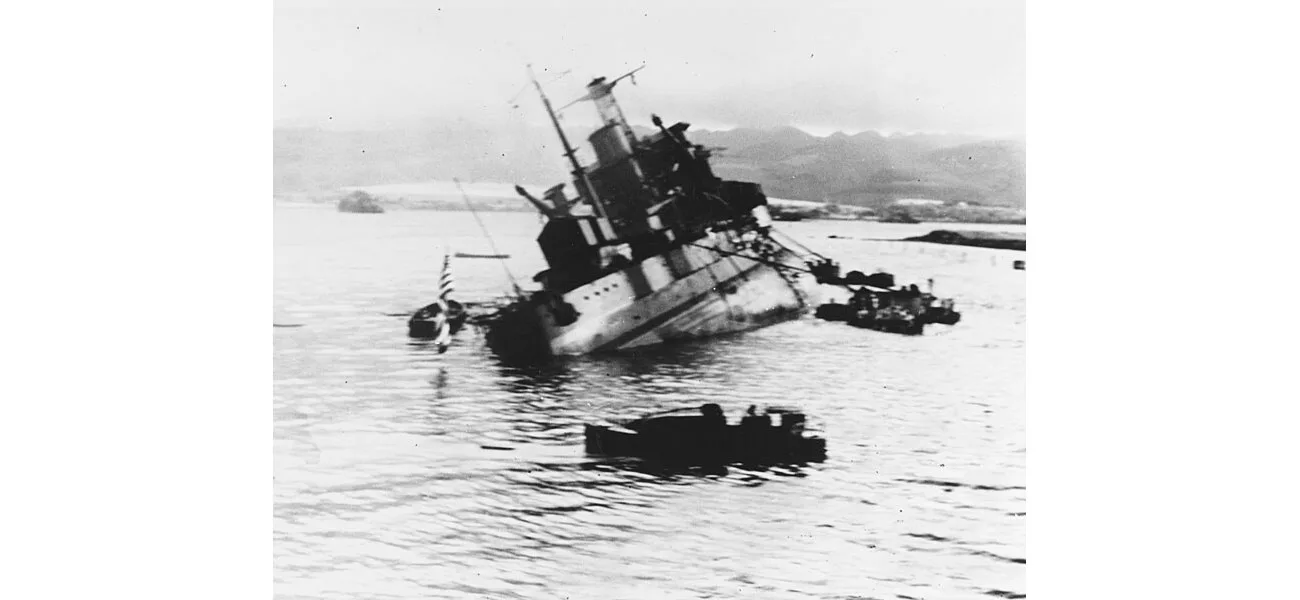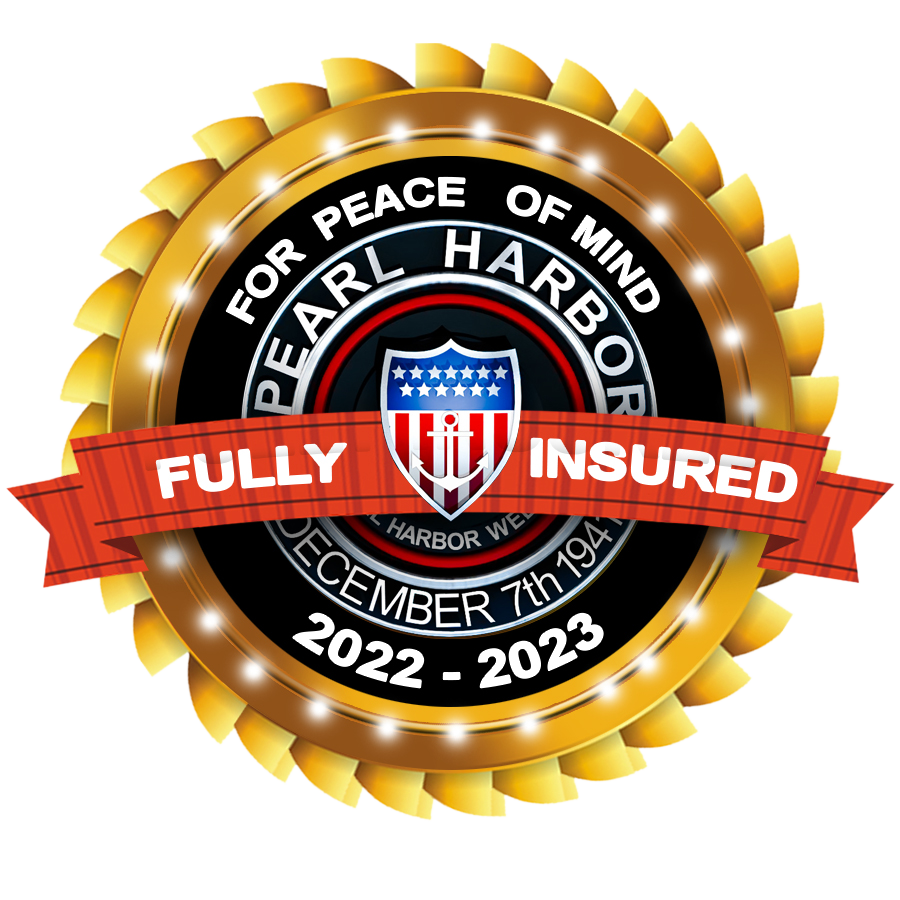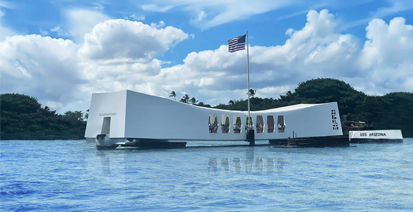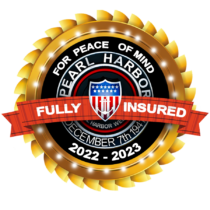Pearl Harbor Survivors Tell Their Stories
Before embarking on a Pearl Harbor tour, it’s important to gain a deeper understanding of the events that took place on December 7, 1941. First-hand accounts from Pearl Harbor survivors offer a vivid and personal perspective on the attack. Although the number of living survivors continues to decrease, their memoirs preserve the stories of courage, fear, and sacrifice. Below are several impactful accounts from survivors who lived through that fateful day.
Trapped at Pearl Harbor: Escape from Battleship Oklahoma
By Stephen Bower Young
USS Oklahoma (BB-37) was one of the two battleships damaged beyond repair during the attack on Pearl Harbor. As it capsized, many sailors were trapped inside, desperately fighting for survival. Among those entombed in the sinking vessel was Seaman First Class Stephen Bower Young. In Trapped at Pearl Harbor: Escape from Battleship Oklahoma, Young recounts his hours of entrapment and the dramatic escape that followed.
Young’s memoir offers a suspenseful and detailed narrative of the emotions and fears that gripped the sailors as they faced imminent death. The rising water, limited air, and hope for rescue are all portrayed with heart-pounding tension. His account brings to life the USS Oklahoma Memorial and offers readers a real connection to the struggles these men faced in their final moments on board.
All the Gallant Men: An American Sailor’s Firsthand Account of Pearl Harbor
By Donald Stratton
In All the Gallant Men, Donald Stratton recounts his experience as one of the few survivors from the USS Arizona (BB-39), the ship that suffered the greatest loss of life during the attack. Stratton’s gripping memoir paints a vivid picture of the devastation aboard the battleship after it was hit by Japanese bombs. The ship exploded in a fiery inferno, killing 1,177 sailors in mere moments.
Stratton’s account highlights not only the terror and destruction but also the heroism displayed that day. One man, Joe George, risked his life to save Stratton and other trapped sailors by throwing them a lifeline as the ship burned. This memoir is a powerful tribute to those who died aboard USS Arizona and a reminder of the bravery and sacrifices made by its survivors.
A True American: The Story of a Pearl Harbor Survivor, World War II, Korean and Vietnam War Veteran
By Sterling Cale
Sterling Cale’s A True American offers a unique look into the life of a sailor who survived not only Pearl Harbor but also served in World War II, the Korean War, and the Vietnam War. On the morning of the attack, Cale was a pharmacist’s mate at Pearl Harbor. As the attack unfolded, he quickly joined others in jumping into the burning waters to rescue sailors. His bravery and quick actions saved lives, as he pulled survivors and casualties from the water amid the chaos.
This memoir provides a powerful look at the courage displayed during Pearl Harbor, as well as Cale’s experiences in the years that followed. His story of sacrifice and dedication is a testament to the spirit of the American servicemen during times of war.
Counting My Blessings: The Autobiography of a Native Hawaiian Pearl Harbor Survivor
By Herb Weatherwax
Counting My Blessings is the autobiography of Herb Weatherwax, a native Hawaiian who grew up in Honolulu and witnessed the devastation of the Pearl Harbor attack firsthand. While much of his book focuses on the events of December 7, 1941, Weatherwax also provides readers with a fascinating look at his life before and after the war. His unique perspective as a native Hawaiian adds depth to the understanding of how the attack and the subsequent war impacted the islands.
In later years, Weatherwax became a well-known figure at the Pearl Harbor Memorial, often greeting and talking with visitors. His memoir not only captures the harrowing events of that day but also reflects on the long-lasting effects the attack had on the people of Hawaii.
Diary of a Pearl Harbor Survivor
By Alfred Benjamin Kameeiamoku Rodrigues
Alfred Rodrigues, born and raised in Hawaii, served as a Chief Petty Officer stationed at Pearl Harbor. His Diary of a Pearl Harbor Survivor provides a deeply personal and emotional look at the attack and its aftermath. Rodrigues kept a diary during his service, detailing not only the events of the Pearl Harbor attack but also his experiences throughout World War II, including his service aboard the battleship USS Washington (BB-56).
Rodrigues’ journal entries capture the fear, confusion, and sorrow that came with surviving such a monumental event. His story is raw and honest, providing readers with a glimpse into the emotional toll the attack had on those who lived through it. For anyone looking to understand the psychological and personal impact of the attack, this memoir is a must-read.
The Other Side of Infamy: My Journey through Pearl Harbor and the World of War
By Jim Downing
In The Other Side of Infamy, Jim Downing, a retired Navy lieutenant and one of the oldest living Pearl Harbor survivors, shares his memories of the attack. Downing was aboard USS West Virginia (BB-48) when the bombs fell, and his account of that day reflects the chaos and confusion that ensued. Downing’s memoir is not only about his experiences during the war, but also his journey of faith and redemption in the years that followed.
This memoir stands out for its reflections on life after the war. Downing, who became a prominent figure in The Navigators ministry, offers insight into how he coped with the trauma of Pearl Harbor and how his faith guided him through the challenges of the post-war world. His story is an inspiring tale of survival and spiritual growth.
From Pearl Harbor to Calvary
By Mitsuo Fuchida
Unlike the other memoirs, From Pearl Harbor to Calvary is not a survivor’s account but the story of Mitsuo Fuchida, the lead Japanese pilot who famously gave the command “Tora! Tora! Tora!” to signal that the attack on Pearl Harbor was a success. After the war, Fuchida experienced a profound transformation, converting to Christianity and reflecting on the role he played in the attack.
Fuchida’s memoir provides a unique perspective on Pearl Harbor, showing how even those who were on the attacking side were deeply affected by the events. His journey from military leader to a man of faith adds a new layer to the Pearl Harbor narrative, offering readers a glimpse into the complexities of war and redemption.
